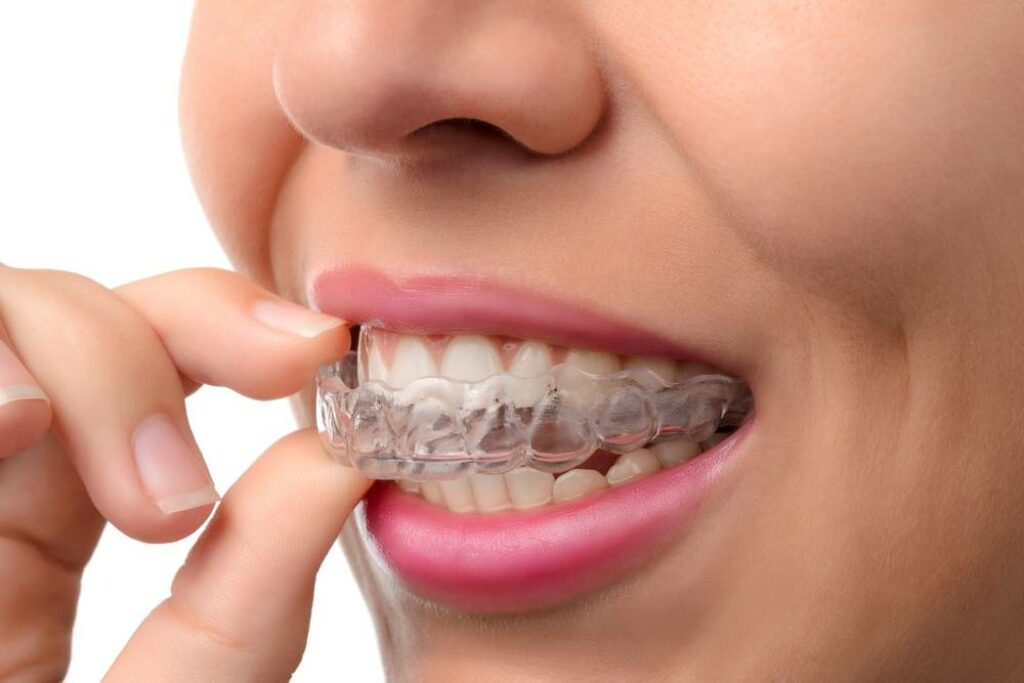
Costs, Benefits and Medicare Coverage For Invisalign
Many people of all age groups have a variety of problems with their teeth that require some sort of orthodontic treatment. These problems involve overbite, underbite, crooked teeth and many other alignment issues. In former years, orthodontists would use metal braces. Nowadays however, there are better alternatives, such as Invisalign.
Related Topics (Sponsored Ads):
Invisalign is a new and highly effective teeth-straightening orthodontic treatment that uses clear, custom-made aligners to gradually shift teeth into their proper position. Compared to the rather irritating traditional metal braces of yesteryear, Invisalign offers a more discreet and comfortable option for people needing orthodontic treatment. Although metal braces are typically more affordable, they take longer to complete the process, are more visible to the eye, and often require more frequent visits to the orthodontist’s office for adjustments and check ups. Moreover, metal braces can also cause more pain and discomfort.
Listed below are the varying costs, benefits and Medicare coverage for Invisalign treatment.

How Invisalign Works
Invisalign is steadily growing in popularity, and it’s not hard to see why. It employs the use of clear aligners made of a specialized thermoplastic material to shift teeth into proper alignment. These aligners are custom-made to fit each patient’s jaw and teeth, and are usually replaced every two weeks or so to gradually move the teeth into their desired position. The treatment is typically recommended for people with common, mild to moderate problems, such as gaps between teeth, overcrowding, and misalignment.
Costs
The cost of Invisalign treatment can vary quite a bit depending on a variety of factors, such as the severity of the dental problem, the necessary length of treatment, and where the orthodontist is located. According to Invisalign’s official website, the national average cost of treatment can fall anywhere between $3,000 to $7,000. However, in some cases, the cost can potentially increase to as high as $8,000 to $10,000.
Benefits
Although it is a pricey endeavor, there are several benefits to this treatment that still make it a worthwhile option for many people.
1. Discreet Appearance: One of the most significant benefits of Invisalign is that the aligners are virtually invisible. This makes the treatment very appealing for people who are self-conscious about their appearance in photos and videos.
2. Comfort: The aligners are made of a smooth, pain-free material that does not irritate the gums and cheeks like traditional metal braces can. Additionally, they are custom-made to fit each patient’s teeth, which makes them a lot more comfortable to wear.
3. Removable: Unlike traditional metal braces, the aligners are removable. This means that patients can take them out whenever needed to eat, brush, and floss. This makes it easier to maintain good oral hygiene during the course of treatment.
4. Shorter Treatment Time: If it’s a minor case, treatment can be completed in as little as six months. This is all thanks to the fact that the aligners are designed to move and reposition teeth quicker and more efficiently than methods used in the past.
5. No Dietary Restrictions: With traditional braces, there are several food restrictions, such as avoiding sticky or hard foods. However, with Invisalign, patients can eat whatever they want as long as they remove the aligners beforehand.
6. Fewer Office Visits: Patients typically only need to visit their orthodontist every six to eight weeks during treatment, compared to every four to six weeks with traditional braces.
Medicare Coverage
Medicare is the national federal health insurance program that provides various medical coverage to people aged 65 and older. However, regular Medicare does not typically cover orthodontic treatments. This means that regular Medicare patients who want to undergo Invisalign treatment will need to pay for it out of pocket.
Fortunately, some Medicare Advantage plans offer coverage for many orthodontic treatments, including Invisalign. Medicare Advantage plans are offered by private insurance companies and are an alternative to traditional Medicare. These plans often offer additional benefits such as dental, vision, and hearing coverage. Exact coverage varies depending on your plan and the specific policies of the insurance company, so you will need to check with them beforehand.
Alternatives to Invisalign
While Invisalign works well for many individuals, it may not be the best option for everyone. Depending on the severity of the dental problem, the length of treatment, and the patient’s preferences, there are alternative treatment options that you may wish to consider.
– Ceramic Braces: Ceramic braces are similar to metal braces but are made of a clear or tooth-colored material that blends in with the teeth. This makes them less noticeable than metal braces, but they may be more expensive and require more frequent adjustments.
– Lingual Braces: Lingual braces are similar to traditional metal braces but are attached to the back of the teeth instead of the front. This makes them virtually invisible, but they can be more difficult to clean and adjust than other types of braces.
– Clear Braces: Clear braces are similar to ceramic braces but are made of a clear material that makes them even less noticeable. However, they can be more expensive than ceramic braces.
– Retainers: Retainers are a non-invasive option for people who only need minor teeth alignment. They can be used to maintain the position of teeth after orthodontic treatment or to gradually shift teeth into proper alignment over time.
Final Thoughts
Patients who are exploring Invisalign treatment should first consult with their orthodontist to determine if it’s truly the best option for them, along with their payment and financing options. Also, if you’re a senior citizen, it’s highly recommended to check the availability of coverage through a Medicare Advantage plan to help make the cost more manageable.




